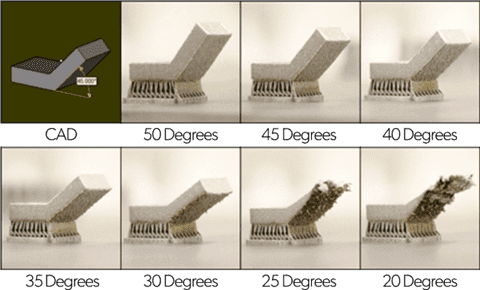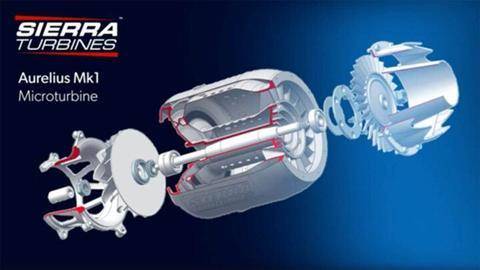Global industry is ever evolving, constantly seeking new ways to increase production, decrease cost and save time. With the advent of 3D printing – also known as additive manufacturing (AM), the 21st century has seen applications across a huge range of sectors mass-produced on an unprecedented scale.
Velo3D, a US-based AM company has sought to take full advantage of this need, offering end-to-end software and hardware solutions for metal AM. By creating Velo3D, its founder and CEO, Benny Buller, aimed to solve a ‘fundamental flaw’ limiting the speed of AM adoption: the need for engineers to learn AM and a new design process, Design for Additive Manufacturing (DfAM).
Despite existing for over 30 years, it’s only within the past five that AM has taken off in its industrial application. A primary use in the past 18 months has been in the manufacture of medical equipment parts as a response to the global health crisis caused by Covid-19.
Differentiating it from ‘subtractive’ manufacturing processes, AM is a way of creating a structure by adding layer upon layer, whereas traditional methods require the use of tools such as a drill or lathe to carve away existing material to create the structure.
This method essentially mirrors aspects of design present in nature, such as the layer-by-layer agglomeration of coral reefs or the gradual creation of honeycombs by bees.
For any new technology to succeed, there must be limitations associated with the current ‘best’ method. When it comes to the production of high value industrial parts, a certain percentage can be made using computer numerical control (CNC) machining, a manufacturing process in which software essentially tells the factory machinery how to cut a specific part.

Diagram illustrating the difficulties faced in conventional 3D printing. Source: Velo3D
In conventional ‘supported’ printing, warping can occur as the design goes beyond 45 degrees.
CNC is considered an extremely reliable, ‘mature’ technology with predictable outcomes. Despite this, as industrial machinery evolves, parts can evolve with them and become more complex internally. This internal complexity is incompatible with traditional CNC methods due to the inability of machining tools to fit inside and cut the internal structures.
“Those would be the parts that would be ideal candidates for additive manufacturing,” said Buller.
He added, “The conundrum of 3D printing or AM is that those exact parts are actually unnatural to make by 3D printing. This is because they will generally have interfaced surfaces that would require to be supported in the production process.”
These supports, as illustrated above, can cause damage to the internal channels of the component. Velo3D provides a solution, called Velo3D SupportFree Processing, which allows for horizontal support-free manufacturing.
Although AM itself has inherent constraints, Buller states that Velo3D is about shattering any constraints of additive manufacturing.
“We can do this by shattering this concept of the enslavement of this technology to the design of additive manufacturing, allowing companies to actually make the parts they really need.”
Stating that industry has been looking ‘feverishly’ for those applications that have complex internal structures capable of being modified to comply with the design rules for AM, Buller added, “This allows us to address a much bigger market than previously was possible to address with AM.”
Applications for AM
Velo3D has found that its application for areas such as the industrial gas sector best fit into systems or in products that manage the flow of fluids and heat. Industrial pumps, compressors, heat exchangers can all be made more reliable, agile and leave behind a ‘smaller footprint’ when made using Velo3D technology, according to Buller.
“An example would be the subsystems of a compressor, in some cases you can replace some assemblies that are made from tens of thousands, even in some cases more than 100 parts into a single part,” he said.
This allows for around a ten times faster production rate, increasing the efficiency of the company’s manufacturing process as well as reducing its inventory of spare parts.

Advantages over CNC manufacturing are clear, traditional methods involve more tooling and longer lead times.
“Additive manufacturing becomes a digital technology that can produce much higher quality parts, much more consistently and much faster with a much more diversified supply chain,” he added.
With such a wide range of potential ‘real world’ applications of AM, the scope for its adoption seems limitless, depending on scalability and cost.
When asked what he considered to be among the most interesting potential applications of AM, Buller replied, “I see a lot of very interesting applications in aerospace, so jet engines, rocket engines, heat exchanges and one of the places that see a lot of activity right now is in the area of semiconductors.”
“Also, active gas delivery for semiconductor processing. We have also been working with a company that is developing hydrogen technology and we are helping them to make electrodes for electrolytic hydrogen reactors, so very sophisticated electrodes that were not possible to make before that.”
Another important part of Velo3D’s relationship with the industrial gas industry is its two-year partnership with Taiyo Nippon Sanso (TNSA). The Japanese industrial gas giant – a prominent player in the welding industry – saw the value of AM as an important manufacturing technology.
Challenges faced
When asked about challenges faced in AM, Buller said that the one big problem that the industry has suffered is when customers come to look for parts that they wanted to move to AM, but because the part had a lot of internal features, it wasn’t suitable for AM.
“And the problem is that most organisations cannot actually afford to do those redesigns for all those parts because this will be a monstrous effort.”
“I think that one thing that is really important is that to allow companies a smooth transition to AM by taking parts that they already have and that they are already producing in existing analogue ways, moving them to digital manufacturing, to AM, creating identical replicas without having to change that.”
Emphasising that this is something that wasn’t possible before, Buller believes that this is a critical part of companies adopting AM technology and gaining confidence in the process.
Another important part of widespread adoption of digital AM is standardisation of the technology and the AM ‘network’. Velo3D has built a common software, a common manufacturing platform and common manufacturing processes.
“All our systems around the world are using exactly the same platform, exactly the same process to get the same outcome. We created an exact copy manufacturing network in which you can make your parts anywhere you want, anytime you want by a number of suppliers,” he explained.
The advantage of this is that it creates scalability, reducing the need for investment, allowing more companies to make use of the technology.
Another challenge faced for AM is the relatively high cost. Explaining that it’s not a ‘commodity technology’ that allows the operator to use the cheapest manufacturing technology, Buller said that by introducing new generations of its system at a ‘dramatically reduced’ cost point, allowing the production of parts at a lower cost.
It is expanding its product range this year with an improvement on the existing Sapphire technology. The SapphireXC allows for a higher volume production at about three to four times lower production costs.
The New York Stock Exchange and beyond
Following the company’s recent listing on the New York Stock Exchange (NYSE), Velo3D aims to provide its customers – SpaceX one of them – with a roadmap built around them.
“We enable our customers to make the parts they really need without having to compromise on the adoption of AM, a compromise that is limited by historically by the very limited capabilities of AM,” he concluded.


